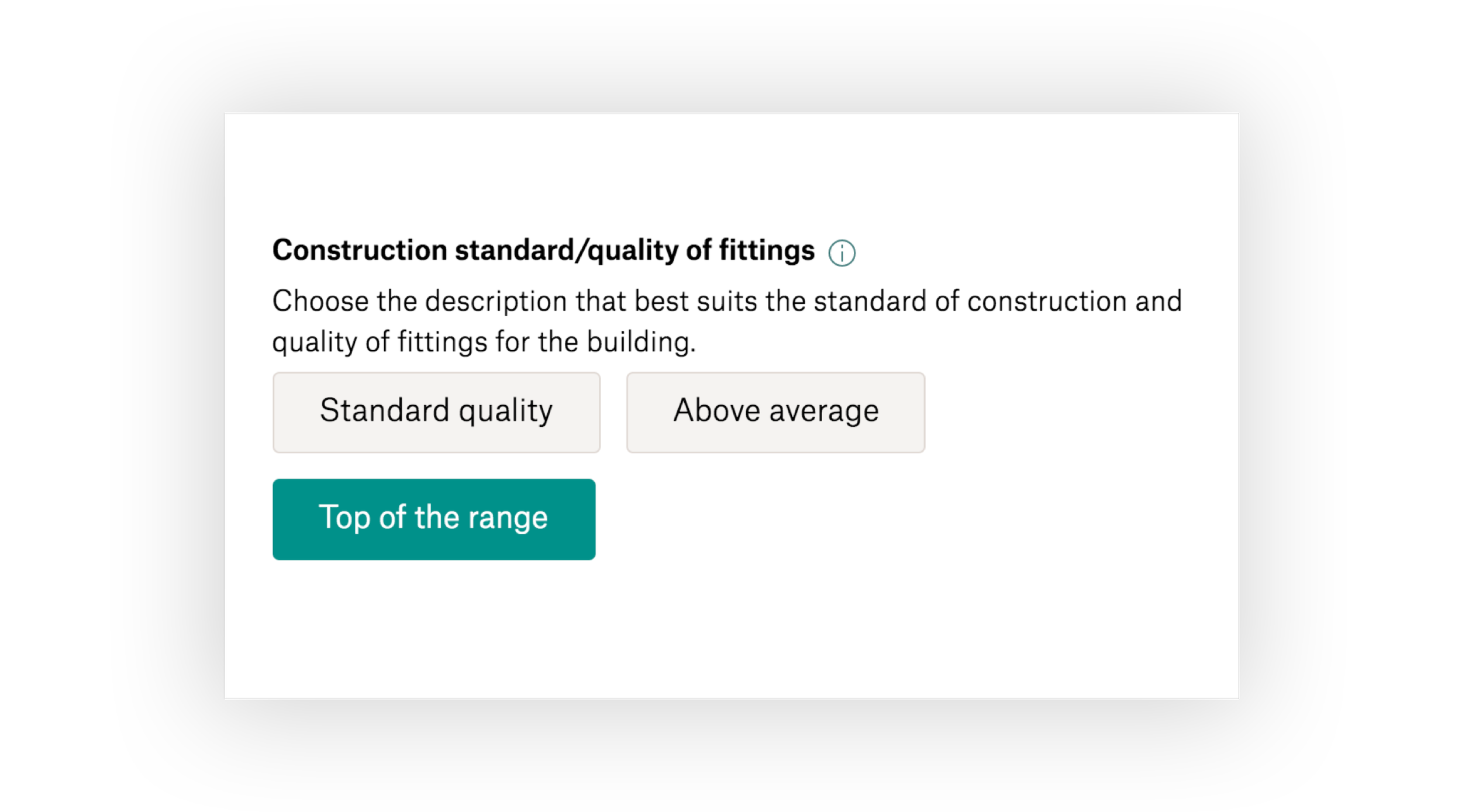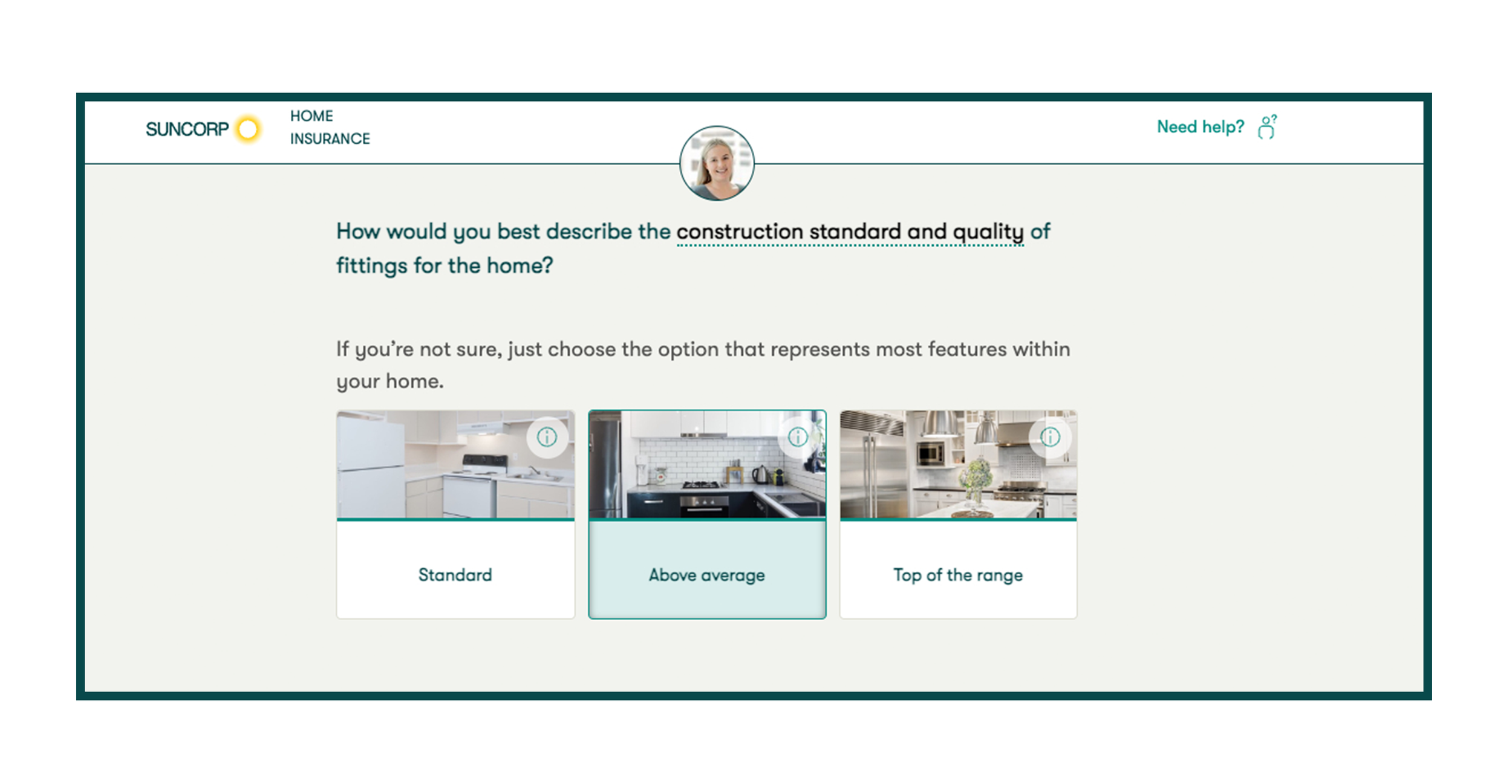
S U N C O R P
AN INSURANCE CASE STUDY
THE BRIEF
Present a vision of the future.
Suncorp were aware their insurance quote process wasn’t great, and this showed in their sales. They wanted a complete review with a vision of what the future could look like. Potentially looking at the future of transport too!
THE APPROACH
We needed to pull everything apart.
I use a Design Thinking approach on my projects. Research helps understand the process and identify the key pain points. This allows the team to zero in on the deeper issues causing the problems. Similarly for solutions, it’s important to come up with many ideas, before narrowing down to those having the biggest impact.
To understand the process of completing an insurance quote we reviewed the form and data, spoke to customers, shadowed staff, and looked at what others are doing. All with the aim to uncover the customer problem behind their business problem.
RESEARCH PHASE
Interesting insights
CUSTOMER FEEDBACK
To be honest I don’t know what i’m insured for.
“
LEARNING ONE
Home insurance is for the worst case scenario
We know we need insurance but most often we think it’s in case we get a leaky roof. However all the questions on the home insurance form are there for one reason, to calculate the cost of rebuilding your home if it were destroyed.
It seems obvious but not everyone, including myself, had ever thought of it as simply as that. And knowing this gives a reason as to why there are so many questions. A reason, not everyone we interviewed, had ever really considered.
LEARNING TWO
26 questions to estimate your home’s rebuild cost
Currently it takes all these questions to calculate the cost to rebuild your home. However at no time in the process are you made aware of why all these questions are being asked. Some people wont mind answering all these questions, but for some each question is an opportunity to lose a customer.
Each question could be one question too far. So rather than accepting the status quo it would be good to challenge and see if we really need all of them?
LEARNING THREE
Call centre staff simplify questions to yes no answers
Questions on the form may have multiple choice answers such as
“ What material is your home made out of? ”
There would then follow 6 or 7 items. As you may have experienced, a read out list can be hard to take in. So agents would Google the customers’ home and then ask a simpler question, such as, is your home made out of brick?
They turned long questions into simple binary ones. Although they did this for a audio medium, there is something in this.
RESEARCH PHASE CONTINUED
Concerning learnings
CUSTOMER FEEDBACK
“
Standard of construction question is confusing. Could there be help about what each means?
LEARNING FOUR
Insurance pricing may be
doubled by mistake
There are several questions that are ambiguous, like the question opposite. The answer is highly subjective. Those being interviewed weren’t sure how to rate their home and were unaware of the impact of the question
We found the cost to rebuild could be 95% higher depending on the answer given. When we delved deeper with our interviewees, we discovered the construction quality in their home was usually standard, although to them it was Top of the Range.
Understandably the insurance premium would also be substantially higher. Therefore people may be surprised by a much higher quote than expected, and reject Suncorp as a potential insurer. All due to an ambiguous question.
LEARNING FIVE
Only 2% finish
In any sales funnel we expect to lose people along the way. We use the volume of drop outs to highlight where to focus on. For this flow we can see after the “Level of Cover” page we lose 24% of customers. This warrants a deeper look. We focused on this page in the customer interviews.
“
CUSTOMER FEEDBACK
The cost is too much. Makes me feel I’ve entered something incorrect.”
LEARNING SIX
Up to 24% of customers abandon as quote page is overwhelming
As we saw in the data for Learning Four, when a customer gets to the end of the quote process they are not presented with one final quote but three. This is confusing as they are overwhelmed with information.
In advertising, clients are advised to state one clear message. One message has a greater chance of hitting home than three. The same goes here. It’s also unclear what the difference is difference between each quote.
LEARNING SEVEN
This is a $100 million project
When we broke the data down we projected that this project could be worth upto $100 million in additional revenue, or an additional $1 Million per 1% increase in form completions.
Therefore the business reasons for solving these issues were clear.
Calculations
Quarterly
Forms completed 845
Average conversion rate 65%
Policies sold 563
Average policy amount $1000
Quarterly revenue $563,000
Annual revenue $2,253,000
Current completion rate 2.23%
Therefore 1% = $1,000,000 Revenue
SYNTH + PAINPONTS
The main problems we aim to solve
THE PROBLEMS TO SOLVE
In the design world, customer problems are briefed as “how might we” questions. This opens the conversation to new ideas.
PROBLEM 1
Too many questions
There are 26 questions asked to get to the end of the quote. Each question is potentially a trigger for a user to abandon the process.
How might we gather information in a way that doesn’t feel too demanding?
PROBLEM 2
Ambiguous questions
Subjective questions can be answered many ways. These questions have huge impacts on pricing which means we mistakenly lose customers.
How might we gather information in a way that requires little explanation.
PROBLEM 3
Overwhelming options
The types of cover offered at the quote stage are complicated. It’s unclear what each mean, what they offer and which you should select.
How might we make it easier to understand the different quote amounts and cover options?
MAIN CONCEPTS
Ideas to solve the pain points
IDEA ONE
Use Google maps to estimate house foot print
Google maps can be used to calculate distances, therefore with AI it can estimate the size of your home.
Currently area of home is based on a few assumptions. Stating you have a large bedroom increases the overall house size by 50%, although no measurements are taken.
With Google Maps we make image based measurements rather than assume sizes based on probability.
A solution to How Might We #1
How might we gather information in a way that doesn’t feel too demanding.
IDEA TWO
One question at a time
One question at a time means users aren’t overwhelmed and they feel like they’re progressing quicker.
A solution to How Might We #1
How might we gather information in a way that doesn’t feel too demanding.
IDEA THREE
Use images to give guidance for subjective questions
Showing an image of an “Above Average” kitchen or “Top of the Range” bathroom gives the customer something to compare against. There is also a list of items that you might also see for that level of finish.
A solution to How Might We #2
How might we gather information in a way that requires little explanation.
IDEA FOUR
Optional extras can be chosen one at a time.
Currently there are three levels of cover you can choose. Each level includes various extras, such as flood or hail damage. Some types of cover, such as Accidental Damage or Motor Burnout, are only available if you opted for the premium insurance plan.
This forced people to opt for a more expensive insurance package they might not need. Again resulting in a much higher price and creating an opportunity to lose a customer.
Instead we have a basic insurance policy with basic features. If customers want to add features they can simply switch them on and off Essentially we are removing the complicated levels of cover and presenting just one quote amount with optional extras.
A solution to How Might We #3
How might we make it easier to understand the difference between each level of cover?
RECOMMENDATIONS
We came up with many ideas. These were grouped into three categories, depending on complexity
JUST DO IT IDEAS
Simple design changes the team should just do. Such as, asking one question at a time.
13 ideas
DESIGN ANALYSIS
Concentrated design sessions and number crunching to determine how to tweak questions.
For example, is there a better question we can ask to find out the construction quality?
8 ideas
BUSINESS DECISIONS
For some ideas the product being sold needs changes and therefore needs senior leader input.
Such as, not all questions need to be captured for the model to work. Can we remove some?
5 ideas
POST SCRIPT
Change takes time, but it happens.
This project shows that significant change does happen. But you have to be patient when working with large organisations with complex structures. Although well received, some recommendations only made their way into the final product in 2022. 4 years later.
As someone who cares greatly about my clients and the work I do, it was very heart warming to see these ideas eventually come to life.
MORE CASE STUDIES


















